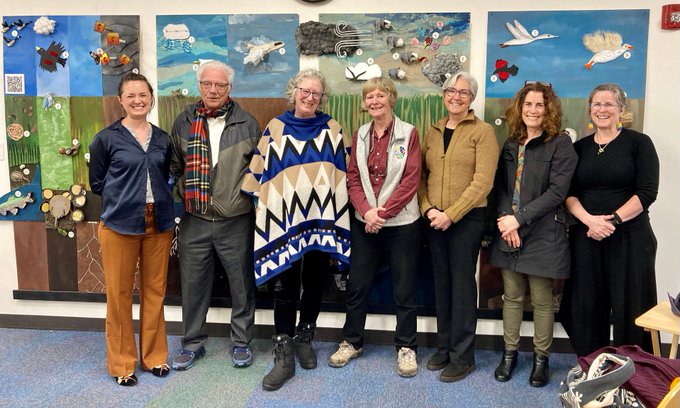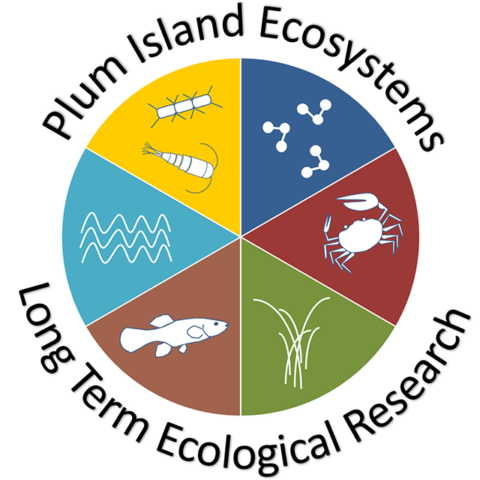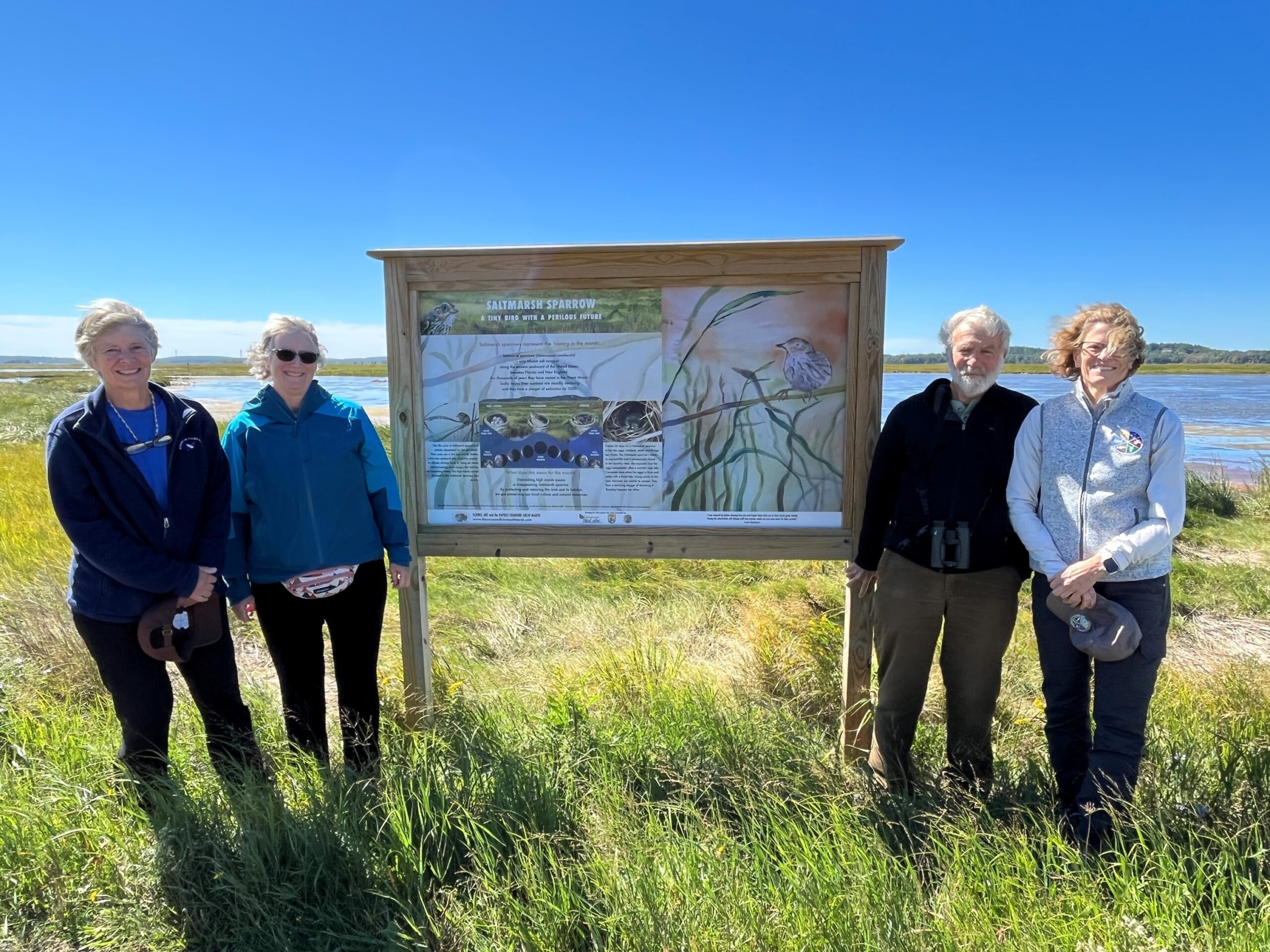Scientists from PIE LTER are actively engaged in sharing their knowledge and presenting their findings to federal, state, and local agencies, nonprofit environmental organizations, and the general public.
PIE scientists also serve on a large number of advisory boards of organizations interested in marsh sustainability and watershed issues.
Great Marsh Coalition
The Great Marsh Coalition is a group of organizations, including PIE LTER, working to study, manage, protect, educate, and engage the public around the largest contiguous salt marsh in New England. With more than 20,000 acres stretching from Cape Ann to New Hampshire, the Great Marsh is the largest salt marsh in New England. Its vast landscape provides critical habitat for threatened species of plants and animals and serves as an important source of climate resiliency for the region by protecting shorelines from storms and absorbing excess runoff.
Northeast Coastal Acidification Network and The Monitoring Acidification Project
PIE LTER participates in the Northeast Coastal Acidification Network (NECAN) by contributing information and data from our various sampling stations in the Plum Island Sound estuary to help increase our understanding of coastal acidification in the Northeast, United States. The Monitoring Acidification Project (MAP) uses info-rich GIS layers to share the locations of coastal monitoring stations, important metadata about monitoring programs, and contact information to help connect water quality monitoring groups with coastal acidification data-users.
Aquaculture Internships for Massachusetts
PIE LTER is excited to be a host site for the Aquaculture Internships for Massachusetts (AIM), a collaborative partnership with MIT Sea Grant, Woods Hole Oceanographic Institution Sea Grant, and Barnstable County Cooperative Extension. The program offers a paid internship to gain experience in aquaculture for those interested in joining the aquaculture industry.
Collaborating with Shellfishers: An APEAL Seed Project
Shellfishing is a storied and vital part of the local economy around PIE estuaries and marshes, and is currently facing many environmental challenges. Through APEAL (Advancing Public Engagement Across LTERs), which aims to advance community engagement with science using LTER sites as models, PIE scientists are connecting with the shellfishing community to identify areas of research to help address some of those challenges. With APEAL Seed project funds, we initiated meetings that are bringing together the shellfishers with the scientists, managers, and other stakeholders to exchange information and experience. A first meeting highlighted the top issues for the group and generated ideas for research projects. A follow-up meeting provided updates about those ideas, and included a presentation by a regional expert on soft-shell clams, Dr. Brian Beal. We look forward to continuing these gatherings, building collaborations, and sharing data and resources.
National Marsh Model Retrospective
The NOAA National Centers for Coastal Ocean Science is developing historical digital elevation models that will help improve predictions of marsh extent under future sea level rise. These models will support a marsh model testbed for retrospective analysis at Grand Bay National Estuarine Research Reserve (GBNERR) in Mississippi and Plum Island Estuary (PIE) in Massachusetts. Land managers can use this information to determine where to prioritize marsh adaptation and mitigation interventions. The project is led by Dr. Julia Cherry of the University of Alabama and includes co-investigators, Dr. Nathaniel Jones and Dr. Emily Elliott. The project is part of the Cooperative Institute for Research to Operations in Hydrology (CIROH).
Education and Outreach through Art
Art can be a powerful way to engage students and the public in science. The PIE LTER has been involved in collaborations with artists and teachers to expose students and the public to the beauty of the salt marsh and to show the challenges facing salt marshes with climate change and sea-level rise. Two projects are listed below but more are planned.
Once and Future Salt Marsh
PIE LTER partnered with artist Susan Quateman to create an art and science exhibit for the Parker River National Wildlife Refuge. Silk paintings, photography and easy-to-understand scientific text highlight three ‘critters’ affected by climate change in the Great Marsh: the Saltmarsh sparrow, Rainbow smelt, and Fiddler crab. The exhibit opened outside at the Parker River National Wildlife Refuge in 2021.

A Child, the Great Marsh, and Climate Change
In 2023, PIE LTER scientists Anne Giblin and Jane Tucker partnered with graphic designer Les Bartlett and silk painter Susan Quateman from the SQ&LB Artist Collaboration, Robert Buchsbaum from Mass Audubon, the Peabody Essex Museum, Essex County Greenbelt Association, and the River Valley Charter School to create a set of art panels from recycled materials entitled “A Child, the Great Marsh, and Climate Change”. The panels were created by 7th and 8th graders with their science teacher, Rebecca Schwer, and art teacher, Lucinda Cathcart, led by Les Bartlett and Susan Quateman and were accompanied by silk paintings by Susan Quateman and video by Lisa Smith. The project was exhibited at Greenbelt as part of Essex Heritage’s Trails and Sails in 2023, at Peabody Essex Museum in February 2024, and at Parker River National Wildlife Refuge in March 2024.

